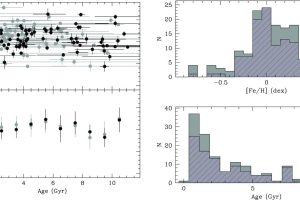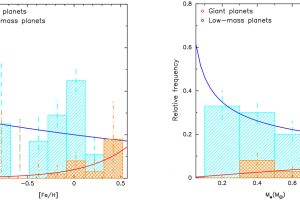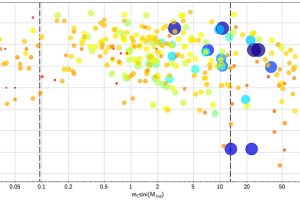There is no relation between age and metallicity of the stars in the Solar neighbourhood. The study: “Constraining the solar neighbourhood age-metallicity relation from white dwarf-main sequence binaries” of A. Rebassa-Mansergas (Universitat Politècnica de Catalunya) recently appeared on MNRAS

After the Big Bang, the Universe contained only hydrogen, helium, and a very small fraction of lithium. After that, stars, mainly the most massive ones, were responsible for the chemical enrichment of the Universe. In fact, stars produce energy by synthetizing chemical elements in their cores. These elements are then redistributed in the interstellar medium when stars end their evolution.
» Read more

